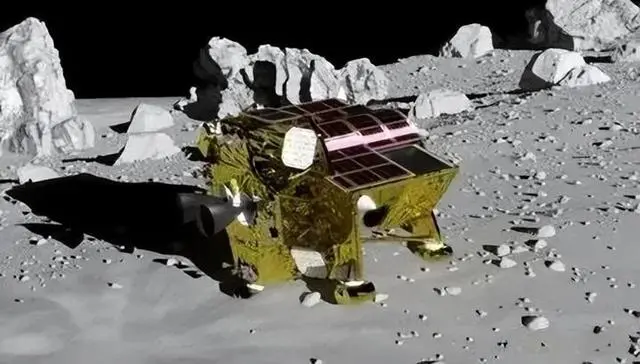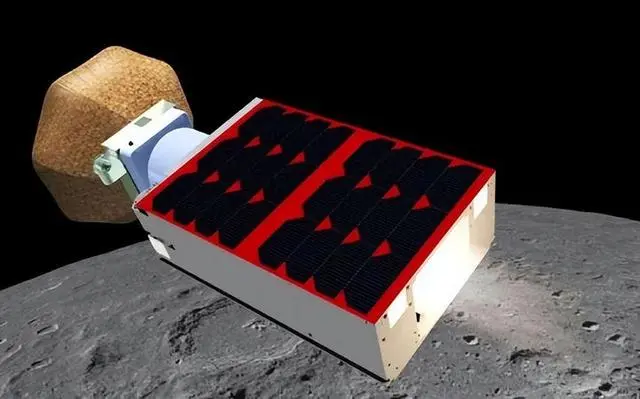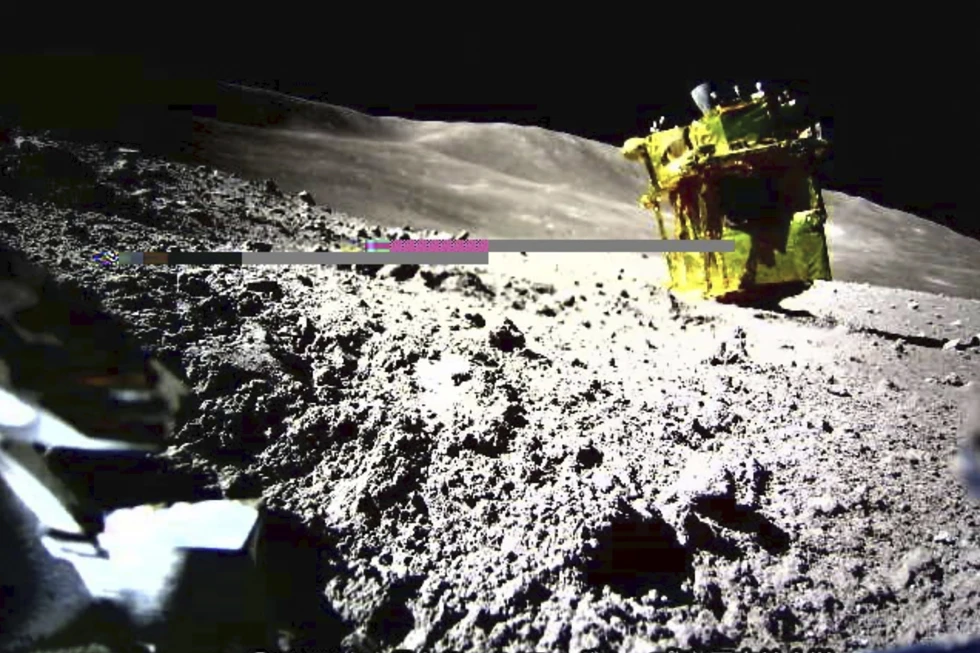The successful resumption of Japan’s lunar mission after several tense days without sunlight is a testament to the resilience and ingenuity of the country’s space exploration efforts.
The precision touchdown on January 20th marked a significant milestone for Japan’s space program, but the unexpected challenge of landing upside down posed a formidable obstacle.
However, with the dawn of the lunar day, the probe has been able to generate power and resume its mission.
The Japan Aerospace Exploration Agency (JAXA) has been at the forefront of the country’s space exploration endeavors, and their successful establishment of communication with the probe on Sunday night is a remarkable achievement.
The fact that the craft has now resumed its mission, capturing images of the Moon’s surface and transmitting them back to Earth, is a testament to the dedication and expertise of the team behind the mission.
The significance of Japan’s lunar mission extends beyond the technical challenges it has overcome. It represents a continuation of humanity’s exploration of the cosmos, a pursuit that has captured the imagination of people around the world for centuries.
The ability to land a probe on the Moon and capture images of its surface is a testament to the progress of scientific and technological advancements, and it serves as a reminder of the boundless potential of human ingenuity.
In addition to the scientific and technological implications of Japan’s lunar mission, there are also broader implications for the country’s role in the global space exploration landscape.
As the mission continues to unfold, Japan’s expertise and capabilities in space exploration will be on full display, further solidifying its position as a key player in the international space community.
The successful resumption of the lunar mission also serves as a reminder of the inherent risks and challenges associated with space exploration.
The unpredictability of the lunar environment and the need to adapt to unforeseen obstacles are inherent aspects of venturing into the unknown reaches of space.
The fact that the probe has been able to overcome these challenges and continue its mission is a testament to the resilience and determination of the team behind the mission.
Looking ahead, the resumption of Japan’s lunar mission opens up new possibilities for further exploration and discovery.
The images captured by the probe will provide valuable insights into the Moon’s surface and contribute to our understanding of the lunar environment.
The data collected by the probe will undoubtedly pave the way for future missions and scientific endeavors, further advancing our knowledge of the cosmos.
In conclusion, the successful resumption of Japan’s lunar mission is a testament to the country’s expertise and dedication in the field of space exploration.
The mission represents a significant achievement in the ongoing quest to explore the cosmos and unlock the mysteries of the universe.
As the mission continues to unfold, it will undoubtedly contribute to our collective understanding of the Moon and inspire future generations to continue pushing the boundaries of scientific and technological exploration.

Following a last-minute engine failure which resulted in a rough landing for the Smart Lander for Investigating Moon, or SLIM, JAXA took immediate action to utilize battery power in order to gather as much data as possible about the touchdown and the probe’s surroundings.
The decision was made to power down the craft and await the rising of the sun in the lunar sky in late January.
Despite the setback, SLIM has continued its mission to analyze the composition of olivine rocks on the lunar surface using its multi-band spectral camera, with the aim of uncovering vital clues about the Moon’s origin and evolution.
Previous observations have indicated the possibility that the moon was formed as a result of the Earth colliding with another planet.
JAXA recently shared a black-and-white photo on social media, showcasing the rocky lunar surface, including a rock that the agency has affectionately named “Toy Poodle” after spotting it in initial images.
In addition, the probe is currently analyzing six rocks, all of which have been given the names of different dog breeds.
As of now, SLIM is anticipated to have enough sun to continue its operations for several earth days, potentially until Thursday.
However, JAXA has noted that it remains uncertain whether the craft will be operational again after enduring another severely cold lunar night.
The successful landing of the SLIM spacecraft marks a significant milestone in Japan’s space exploration efforts.
Despite landing approximately 55 meters away from its intended target, the spacecraft managed to touch down in between two craters near the Shioli crater, a region characterized by volcanic rock.
This achievement is particularly noteworthy given that previous moon missions have typically aimed for flat areas at least 10 kilometers wide.
The SLIM also carried two autonomous probes, which were released just before touchdown, allowing for the recording of valuable data about the landing, surroundings, and other lunar features.
With this successful mission, Japan has now joined the ranks of the United States, the Soviet Union, China, and India as the fifth country to reach the moon’s surface.
This accomplishment not only showcases Japan’s technological prowess in the field of space exploration but also underscores the country’s commitment to advancing scientific knowledge and understanding of the universe.
Thank you for sharing this informative update on the Japanese moon probe, SLIM. It’s fascinating to learn about the recent developments and the continued efforts of the Japan Aerospace Exploration Agency (JAXA) to gather data and analyze the lunar surface.
The use of battery power to collect data after the last-minute engine failure and the subsequent wait for the sun to rise higher in the lunar sky demonstrate the resilience and adaptability of the SLIM mission.
The ongoing analysis of olivine rocks with the multi-band spectral camera is particularly intriguing, as it holds the potential to provide valuable insights into the Moon’s origin and evolution.
The naming of the rocks after dog breeds adds a touch of lightheartedness to the mission and highlights the human element behind the scientific exploration.
Additionally, the successful deployment of the autonomous probes and the landing in a region covered in volcanic rock showcase the technological achievements and capabilities of the mission.

It’s impressive to note that the SLIM mission has positioned Japan as the fifth country to reach the moon’s surface, joining the ranks of the United States, the Soviet Union, China, and India. This achievement reflects the dedication and expertise of the team at JAXA.
I look forward to hearing more updates on the SLIM mission and its findings as it continues its operations on the lunar surface.
The perseverance and innovation demonstrated by JAXA are truly commendable, and I hope that the craft will be able to work again after the upcoming lunar night. Thank you for sharing this insightful information.
